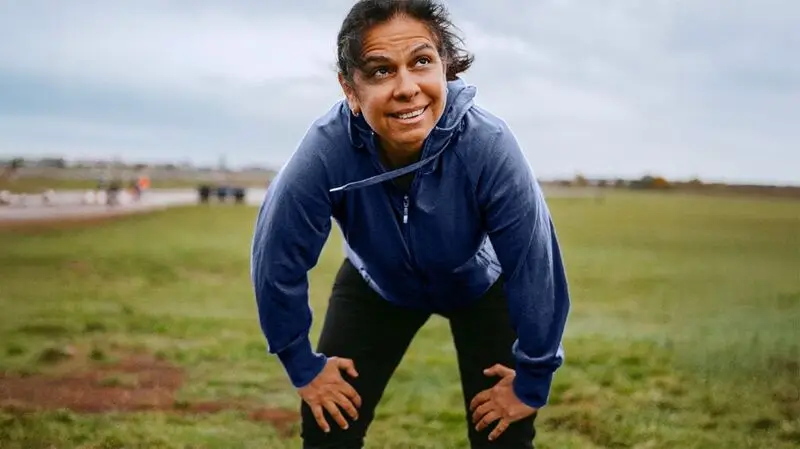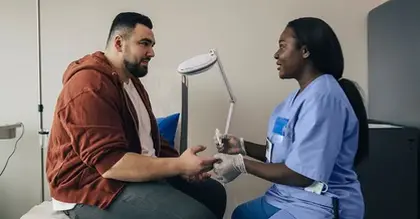
- Past studies show that human aging doesn’t necessarily happen at the same pace throughout our life.
- There is still much to discover about the aging process, especially when it comes to how it impacts the body’s organs.
- A new study found that by focusing on aging-related protein changes in the body, there is an acceleration in aging of organs and tissues around the age of 50.
- And of these proteins, scientists found that expressions of 48 of them linked to diseases increased with age, such as cardiovascular and liver disease.
While we can try to slow it down, human aging is something we currently can’t stop from happening. However, past studies show that aging doesn’t necessarily happen at the same pace throughout our life.
Instead, there are certain ages when a person’s body may experience a burst of aging. Previous studies show that the body may undergo rapid aging around the
And there is still much to discover about the aging process, especially when it comes to how it impacts the body’s organs.
“Aging, as a systemic, degenerative process that spans multiple organs and biological strata, remains one of the most profound unresolved questions in the life sciences,” Guang-Hui Liu, PhD, regenerative medicine researcher at the Chinese Academy of Sciences, explained to Medical News Today.
“Throughout the extended human lifespan, two fundamental issues persist: Do all organ systems adhere to a unified aging rhythm? Does a molecular spatiotemporal hub exist that orchestrates organism-wide senescence? Despite their centrality to understanding the essence of aging, these questions have long lacked systematic, empirical resolution.”
Liu is the corresponding author of a new study recently published in the journal
And of these proteins, scientists found that expressions of 48 of them related to diseases — such as cardiovascular disease and fatty liver disease — increased with age.
For this study, researchers analyzed 516 samples of 13 types of human tissues collected from 76 organ donors between the ages of 14 and 68 who had passed away from traumatic brain injury.
The tissue samples included cardiovascular, digestive, respiratory, endocrine, and musculoskeletal samples, as well as immune system, skin, and blood samples.
Next, researchers documented the types of proteins found in the organ and tissue samples, allowing them to create what Liu called “a proteomic aging atlas” that spans 50 years of human life.
“Covering seven physiological systems and thirteen pivotal tissues, the atlas presents a panoramic, dynamic portrait of organismal aging from a protein-centric perspective,” Liu explained. “The more than 20,000 proteins encoded by the genome serve as the structural bedrock of cells; their dynamic networks exquisitely orchestrate physiological homeostasis and act as the principal executors of virtually every biological process.”
“Consequently, systematically charting a panoramic, lifespan-wide atlas of proteomic dynamics and dissecting the reprogramming rules of protein networks at organ- and system-level scales are pivotal for accurately identifying the core drivers of aging and for establishing precise intervention targets,” he added.
At the study’s conclusion, researchers found that the biggest aging changes in the body’s organs and tissues seems to occur around age 50.
The critical aging window“Ages 45–55 are identified as a landmark inflection point: most organ proteomes undergo a ‘molecular cascade storm,’ with differentially expressed proteins surging explosively, marking this interval as the critical biological transition window for systemic, multi-organ aging.”
— Guang-Hui Liu, PhD
“Notably, the aortic proteome is reshaped most dramatically; its secretome and the circulating plasma proteome evolve in tight concordance, indicating that senescence-associated secreted factors (senokines) may serve as the hub mechanism broadcasting aging signals throughout the body,” Liu explained.
Additionally, Liu and his team found that expressions of 48 of the proteins linked to diseases, including cardiovascular disease, fatty liver disease, tissue fibrosis, and liver-related tumors, increased with age.
“Organ aging is the essence of human chronic disease; each geriatric illness is merely a specific manifestation of this underlying organ aging,” Liu added.
MNT had the opportunity to speak with Cheng-Han Chen, MD, a board certified interventional cardiologist and medical director of the Structural Heart Program at MemorialCare Saddleback Medical Center in Laguna Hills, CA, about this study.
“This study found that protein changes in the body associated with aging seem to accelerate roughly around age 50, depending on the type of body tissue. This is an interesting finding that helps us better understand the types of biochemical changes that underlie aging and potentially provide targets for therapy at different stages of someone’s life.”
— Cheng-Han Chen, MD
“Science is only beginning to understand the biological mechanisms involved in aging,” Chen said. “Studies like this help us to identify the basis of normal aging, and in turn provides insight into how deviations in normal biology lead to diseases such as cardiovascular disease and fatty liver disease. Ultimately, this will help us understand how to keep our patients healthy and aging well. It may also help us to develop new therapies for diseases that result from accelerated aging.”
“Future research should attempt to expand on these findings in more diverse demographic groups and as well as in other important organs such as the brain and kidneys,” he added.
MNT also talked to Manisha Parulekar, MD, chief of the Division of Geriatrics at Hackensack University Medical Center in New Jersey, about this research.
How aging affects the whole body“The idea that our cells lose the ability to maintain a healthy and functional proteome (the collection of proteins) is a cornerstone of modern aging theory. The accumulation of misfolded proteins, like
amyloids , is the classic example, best known in neurodegenerative diseases like Alzheimer’s disease. This study’s finding of widespread amyloid accumulation across many tissues confirms that this isn’t just a brain-specific problem but a systemic feature of aging.”
— Manisha Parulekar, MD
“This research is about transforming medicine from a reactive, disease-focused model to a proactive, health-focused one,” she continued. “By understanding the what and the when of aging, we can develop the tools to compress morbidity — allowing people to live not just longer, but healthier and more vibrant lives.”
“A longitudinal study, following the same individuals over decades will be helpful,” Parulekar added when asked what she would like to see as next steps for this research. “This would track their personal proteomic changes over time, allowing us to study genetic and lifestyle differences between people and providing additional confirmation for the ‘age 50 inflection point’.”





